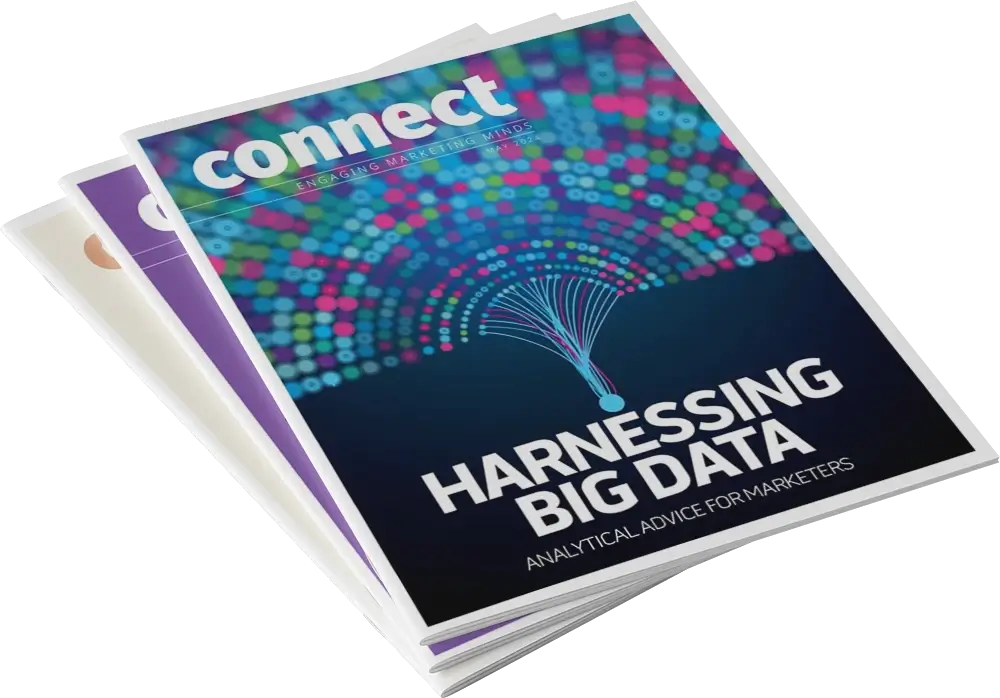The identifying, engaging, and converting of an audience is a continual science—a meticulous process that involves a careful blend of data analysis, personalized engagement, and strategic messaging. To optimize conversions, Oakley says the first step is knowing exactly who your audience is. That means looking beyond general demographics and diving deep into customer surveys, purchase histories, and social media behavior. “When you have the right insights, you can move from guessing to truly understanding what drives customers to act.”
Data sources such as customer surveys give marketers direct insights into their audience’s needs, while purchase data and social media metrics reveal their behaviors, interests, and shopping patterns. With these insights in hand, segmenting an audience becomes not just easier, but essential to your marketing success. “Some of the best ways to identify your target audience are through things like customer surveys, purchase data, and social media insights to better pinpoint who you’re looking at,” Oakley says. “Methods like this will let you gather direct feedback from your customers to see what drives them to make a purchase.”
This, and information from RJ Living’s ecommerce platform, helps make it easier to segment its audience based on their demographics, behaviors, and interests. “All in all, this will make it easier to refine your approach and better communicate with your different customer segments,” Oakley says.
Once you know your audience, the next step is tracking behavior and adjusting your campaigns accordingly. Here, data analytics tools like Google Analytics and Shopify reporting come into play. By monitoring metrics such as bounce rates, page visits, and conversion pathways, Oakley says marketers can pinpoint which parts of the customer journey need enhancement. Imagine discovering that most visitors drop off at a specific point on your site or that particular ad copy is outperforming others—these insights empower marketers to optimize and test new approaches on the fly.
“You need to analyze your data to ensure that nothing is negatively impacting your goal. If leads aren’t converting then maybe you need to switch up something.“
Nathaniel Miller, Founder & Head Marketer, HarvestIQ
Personalization is another game-changer. Today’s customers expect brands to meet them where they are, whether that’s a timely abandoned cart reminder, a personalized product recommendation, or a thank-you message after a purchase. For example, using platforms like Klaviyo, RJ Living creates targeted email flows triggered based on specific customer behaviors.
Consistency is another key, which includes making sure a brand’s messaging is uniform across all of its channels (social media, email and website) to create a seamless experience. Testing also is vital to see what is working and what isn’t. Running A/B tests on landing pages, email subject lines and social ads can help pinpoint what resonates.
“We prioritize metrics like ROAS (Return on Ad Spend), conversion rates, and average order value,” Oakley says. “These metrics give us a clear picture of what’s working and what needs adjustment. For example, if we see a lower conversion rate in a particular segment, we’ll dig deeper into the data to understand why and adjust our messaging or target accordingly.”

Set goals. Attack. Repeat.
Founded in 2021, HarvestIQ specializes in risk management solutions for agriculture. By leveraging integrations with real-time data sources, the software company’s platform presents a comprehensive view of revenue and profitability to empower farmers and their advisors to make data-driven risk management decisions.
With a team of professionals from risk management, agricultural management, insurance, banking, and data science, the company is dedicated to providing best-in-class software solutions that help you visualize risk and revenue with real-time marked-to-marked positions on cash sales, CME futures and options, and USDA insurance programs.
Founder and marketing head Nathaniel Miller has spent considerable time fine-tuning the platform’s approach in the marketplace by creating targeted campaigns with targeted goals. “You have to outline the goal of your campaign. Is it to generate leads for your product? Or maybe to get attendance at an event? Whatever the goal, just make sure you have a clear picture of what success looks like. Next, you’ll need to outline your target audience.”
Miller believes the best way to enhance conversion rates is by understanding your Ideal Customer Profile (ICP). Build a detailed list of who you want to target based on segmented data from your audience list. Next, decide what channel you want for your campaign. “Some channels are better than others, depending on the goals. If you’re looking to invite qualified leads to an event, email might be the best method. As your campaign runs, you’ll need to make sure and give it time to test. I try to test for two to three months if possible, but the minimum is at least two weeks.”
“Some of the best ways to identify your target audience are through things like customer surveys, purchase data, and social media insights to better pinpoint who you’re looking at.“
Nathan Oakley, Marketing Manager, RJ Living
While the campaign runs, Miller captures as much data as possible. He specifically wants to know if the customers are new or someone HarvestIQ already has interacted with, what region, which product they would be interested in, what content caused the click, and then ultimately if they convert. “You need to analyze your data to ensure that nothing is negatively impacting your goal. If leads aren’t converting then maybe you need to switch up something.”
During a recent campaign, HarvestIQ was looking for more qualified leads, so it shifted from traffic-focused ads to Facebook Lead ones. The ads were designed to capture interest within Facebook, making it easy for potential customers to connect. By using advanced audience targeting and integrating the leads directly into its HubSpot CRM utilizing Zapier, the company generated 85% more leads in the first month, each just $3.57—well below the average cost per lead.
“The sales team connected with 50% of the leads, and just one sale more than covered the cost of the entire campaign,” Miller says. “The approach helped build long-term industry connections beyond just generating initial leads.”
In the end, as marketers like Oakley and Miller will attest, enhancing conversions is a continuous cycle of understanding, engaging, and optimizing. Through the right mix of audience insights, data-driven adjustments, and personalized engagement, you can turn each touchpoint into an opportunity for conversion success.

